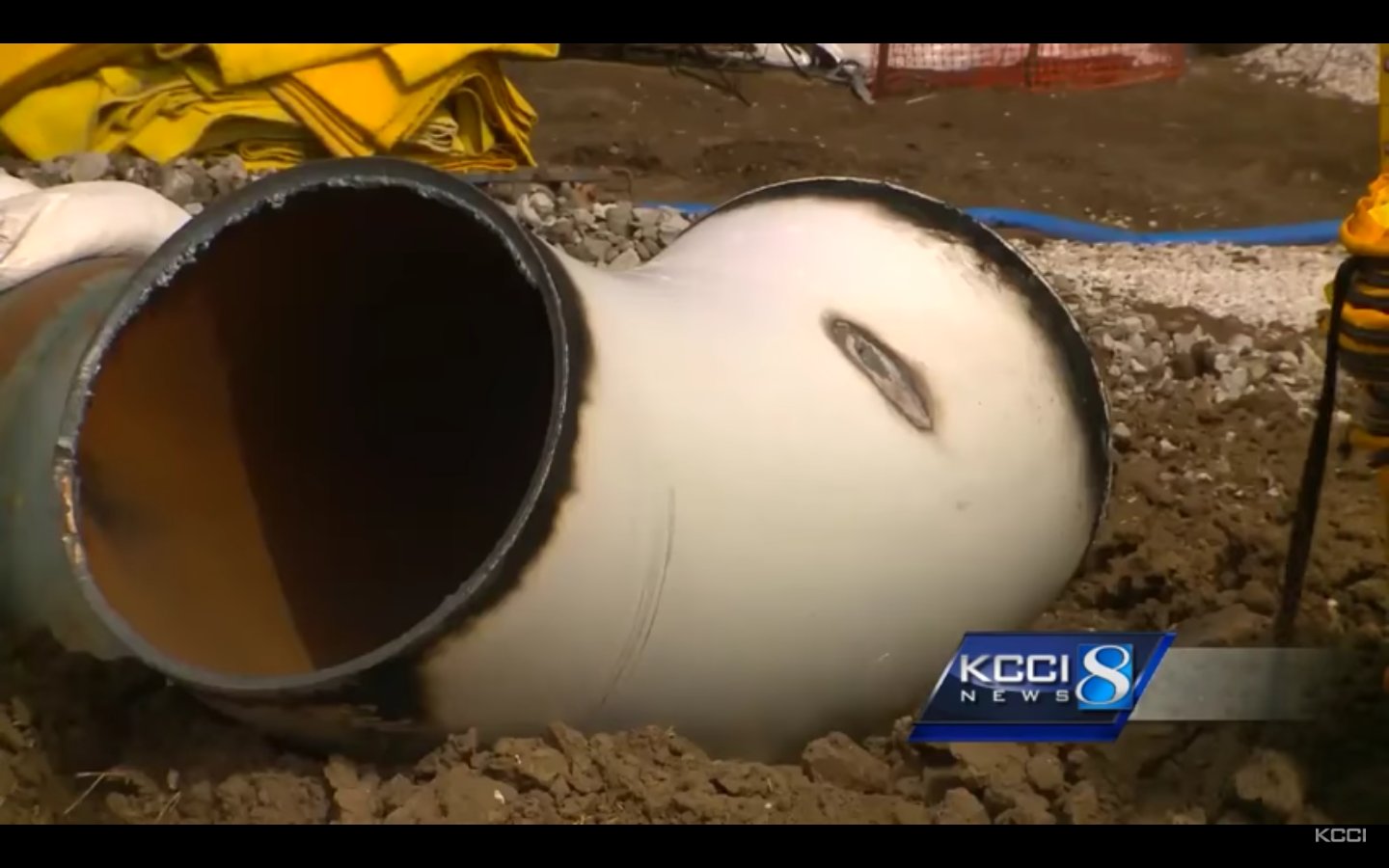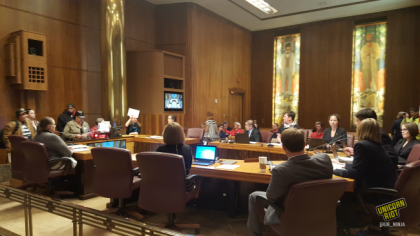Dakota Access Pipeline Sabotaged in Several States, Authorities Claim
Mahaska County, IA & Lincoln County, SD – Authorities in both South Dakota and Iowa have confirmed that alleged acts of sabotage against the Dakota Access Pipeline (DAPL) are being investigated in both states.
The Associated Press reports:
Authorities in South Dakota and Iowa confirmed Tuesday that someone apparently used a torch to burn a hole through empty sections of the pipeline at aboveground shut-off valve sites.
Mahaska County Sheriff Russell Van Renterghem said the culprit in Iowa appeared to have gotten under a fence around the facility, but Lincoln County Sheriff’s Deputy Chad Brown said the site in South Dakota wasn’t fenced.
The Iowa incident was discovered March 13 and the South Dakota incident Friday [March 17].
Pipeline operators are asked to report security breaches to the National Response Center. Data on the center’s website show no reports from ETP this month.
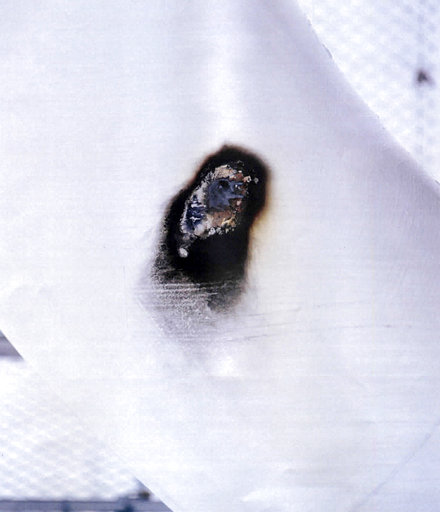
The reported physical attacks on DAPL infrastructure are part of a wider trend against controversial pipeline projects, shown by the recent increase of guerrilla sabotage actions.
On February 22, Enbridge, a large pipeline company with partial ownership of DAPL, announced that an unknown person had fired shots from a passing vehicle at their Bemidji, Minnesota offices the night before (the offices were empty at the time of the shooting).
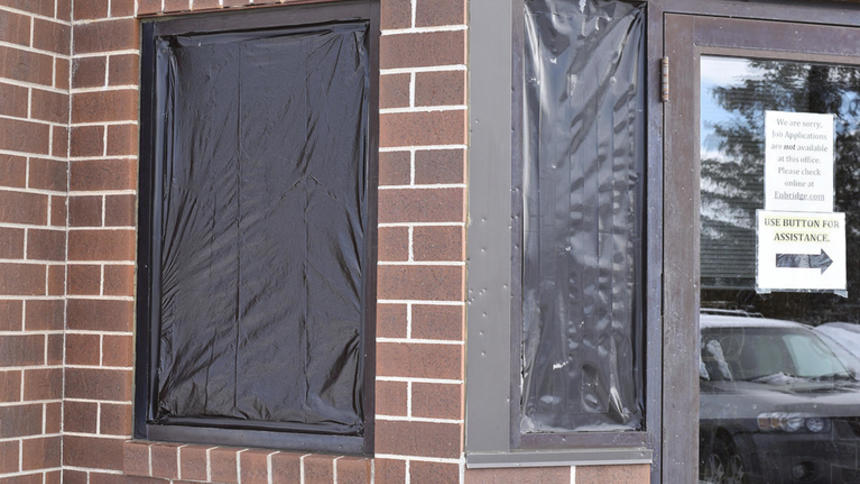
On February 26, 66-year-old James Marker opened fire on construction equipment being used to construct the contested Sabal Trail natural gas pipeline in Florida. Marker also fired several shots into the pipeline itself. Law enforcement gave chase when he fled the scene; after he crashed his truck, sheriff’s deputies shot and killed him.
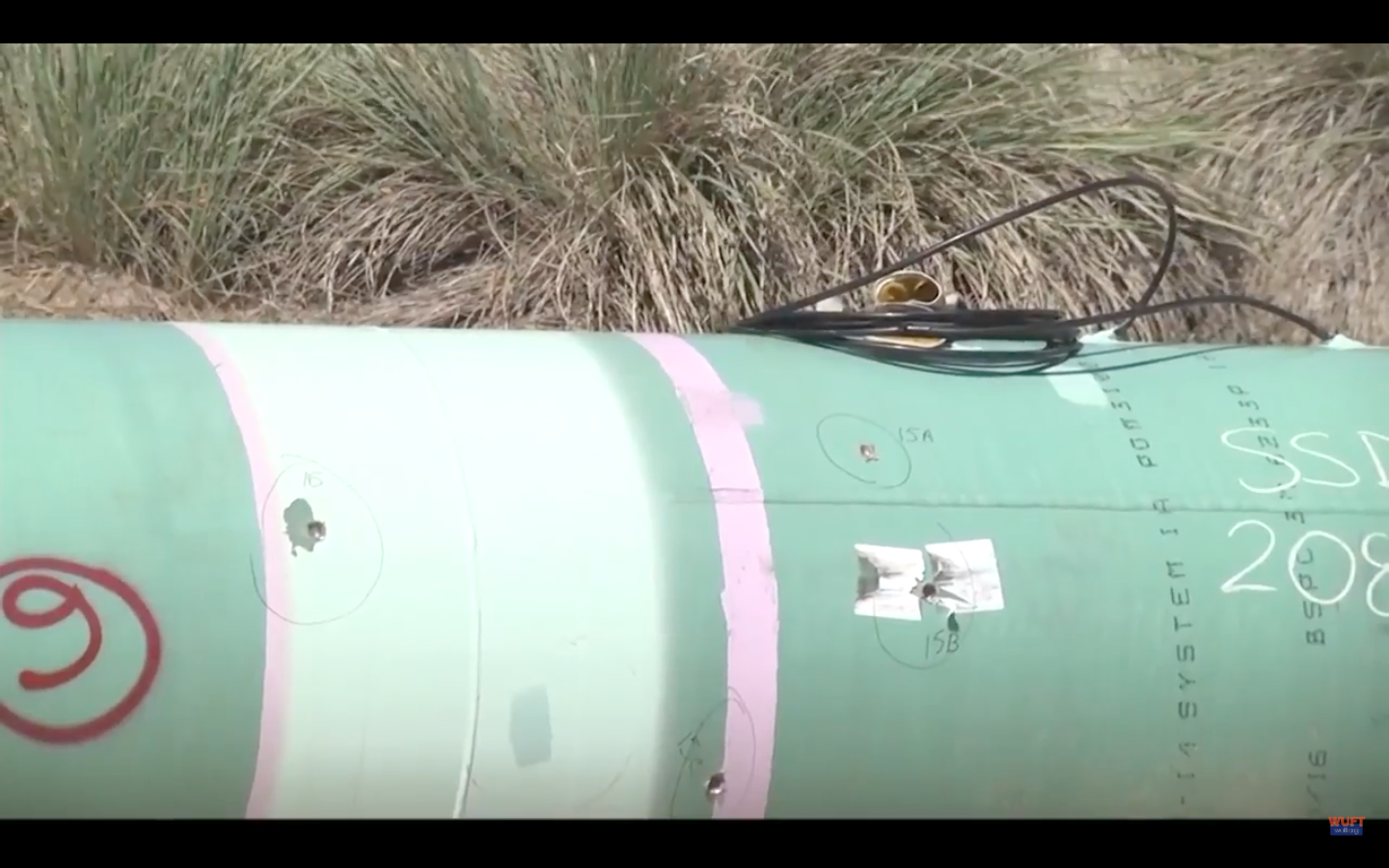
Recent, less conventional direct actions against the physical infrastructure of DAPL and other energy projects point to the inherent vulnerability of pipelines, which rely on numerous aboveground pumping stations for operations, maintenance, and safety purposes. Many pumping stations are not staffed by security personnel and often lack a fence.
On October 11, 2016, climate activists simultaneously shut down five different tar sands pipelines near the US-Canada border, stopping the flow of oil through the pipes by physically accessing emergency shut-off valves.
A video produced in December 2015, by Submedia, shows Canadian environmental activists demonstrating how to stop the flow of oil through a pipeline via a pump station:
Last week’s alleged sabotage of the physical pipeline hit the news at the same time that Norwegian financial giant ING announced it was divesting its stake from the $2.5 billion loan financing DAPL.
Activists continue to pursue their goal to take away the pipeline’s financial solvency by convincing investors to withdraw, even as the physical pipeline itself comes closer and closer to being fully operational. The pipeline is not believed to be entirely finished, as witnesses have reported seeing sections of pipe being driven into the DAPL site near the Standing Rock reservation on the edge of the Missouri River.
https://twitter.com/RuthHHopkins/status/843955368334188545
On Saturday, March 18, a US Appeals Court refused to grant an injunction sought by the Standing Rock Sioux Tribe and the Cheyenne River Sioux Tribe to stop Energy Transfer Partners (ETP) from operating the Dakota Access Pipeline. A federal case surrounding the pipeline is still ongoing, and federal judge James Boasberg is expected to issue additional rulings sometime in April.
ETP has also recently refused to publicly release information about the pipeline’s status to the public, citing “coordinated physical attacks” as justification for secrecy. The company also seeks to withhold certain safety information, such as plans to respond to oil spills, under the same grounds. While refusing to disclose details, ETP has recently indicated that oil could be flowing through DAPL as soon as this week.
Below is Unicorn Riot's coverage of the #NoDAPL anti-Dakota Access Pipeline struggle from early summer 2016 to present:
Watch our feature-length documentary, Black Snake Killaz: A #NoDAPL Story
March - May 2016- March 29th, “Tribal Citizens Prepare to Blockade Bakken Oil Pipeline“.
- April 3rd, “Tribal Citizens Build Camp in Path of Oil Pipeline“.
- May 5th, “Sacred Stone Camp Resists Dakota Access Pipeline“.
- May 27th, “Dakota Access Pipeline Blockade Enters 2nd Month“.
- After covering the camp in the spring of 2016, Unicorn Riot returned to Standing Rock Reservation on Wednesday, August 10th, when Standing Rock tribal members and allies blocked the entrance to the Dakota Access Pipeline construction site.
- On Thursday, August 11th, a dozen or so people were arrested blocking the construction site entrances.
- Day 3, Friday, the fight to protect land & water intensified around the construction sites of the Dakota Access Pipeline.
- On the 4th day, the pipeline resistance encampment swelled and prepared for more action.
- Monday, August 15th, land defenders stormed the construction site halting construction, and the next day construction was halted as well.
- August 17th saw State Police begin checkpoints, roadblocks, and psyops as protesters united to defend water.
- August 24th, camps prepared as Federal injunction hearing looms.
- Camps Organize to Stay as Injunction Postponed.
- On August 31st, Non-Violent Direct Action Stopped DAPL Construction for Over 6 Hours.
- September 6, indigenous water protectors swarmed Dakota Access Pipeline site, stopped work
- September 7, Uŋpa Nuŋpa was interviewed about ongoing #noDAPL actions
- North Dakota highway patrol refused to release email correspondence with Energy Transfer Partners
- September 8, ND National Guard took over Dakota Access Pipeline checkpoints
- Friday, September 9, US Govt. overruled federal judge and requested pipeline construction halted at Lake Oahe
- Meanwhile, cultural activities continued at #NoDAPL camps despite more arrests/warrants
- September 13, 20 were arrested during #NoDAPL lockdown, including 2 Unicorn Riot journalists
- September 14, direct actions continued against Dakota Access Pipeline while legal repression intensified
- On September 16 a federal judge dissolved the unconstitutional temporary restraining order Dakota Access, LLC had filed against Stranding Rock tribal members
- September 19, as solidarity protests spread nationwide, the federal appeals court ordered construction temporarily stop on Dakota Access segment as Solidarity Protests Spread Nationwide
- September 21, #NoDAPL noise demo demanded freedom for jailed water protector Olowan Martinez
- September 22, water protectors disrupted the annual meeting of the North Dakota Petroleum Council
- September 25, water protectors planted trees on DAPL construction site
- In Iowa on September 26, a non-violent direct action from the Mississippi Stand camp stopped DAPL construction for the day
- September 26, a caravan of water protectors stopped work at DAPL site
- September 27, militarized police arrested 23 water protectors in DAPL work stoppage
- September 29, a #NoDAPL solidarity action took place at MN Enbridge office
- October 3rd-4th saw the "Toxic Tour," Governor debate disruption, and water protectors attend their court arraignment
- October 4, we learned North Dakota Governor Dalrymple's email inbox was full of support for #NoDAPL
- October 5, Buffer Zone Holds as Caravans Continue to Disrupt DAPL – New Felony Charges
- October 7, 6 Arrested in Iowa #NoDAPL Action, Including Unicorn Riot Journalist
- October 8, Iowa Water Protectors Blockade DAPL Drill Site Twice in 24 Hours
- October 9, Federal Appeals Court Rules to Allow DAPL Construction
- October 10, 27 Arrests After Water Protectors Pray at DAPL Site on Indigenous People's Day
- October 12, Lockdown Stops DAPL Construction in Iowa, 3 Arrested, Including Unicorn Riot Journalist
- October 14, Emails Show North Dakota Budget Bureaucracy Behind #NoDAPL Policing
- October 16, Direct Actions Continue to Stop DAPL Construction in Iowa and North Dakota
- October 17, Four Unicorn Riot Journalists Face Charges For Covering #NoDAPL
- October 17, Water Protectors Blockade Highway in Bismarck, Some Charges Dropped
- October 20, As DAPL Construction Advances, Water Protectors Continue Direct Action
- October 22, Water Protectors’ Prayer Walk Ends up with 127 Arrests, Including Unicorn Riot Journalist
- October 23, Law Enforcement Attack Private Drone as Water Protectors Erect Blockade & New Winter Camp
- October 24, Mississippi Stand Blockades Iowa DAPL Drill Waste Site, Drilling Stops
- October 25, Records Release: Morton County’s Law Enforcement Mutual Aid Assistance Agreement
- Hundreds Flood Minneapolis City Hall to Demand Local Sheriff Withdraw from North Dakota
- October 26, Tensions Rise as Pipeline Construction Nears #NoDAPL Blockade
- October 27, Police and Military Attack Oceti Sakowin Treaty Camp
- November 1, #NoDAPL Solidarity Rally & Sit-In in Minneapolis Prods Sheriff into Removing Deputies
- November 1, DAPL Resistance Continues Despite Advancing Construction
- November 2, Police Attack Water Protectors Defending Sacred Sites
- November 5, DAPL Construction Nears US Army Corps Land While Still Lacking Permits
- November 6, Water Protectors Attempt to Reclaim Sacred Burial Site, Demonstrate in Cemetery
- November 8, Dakota Access Announces Plan to Drill Under Missouri River Within Weeks
- November 11, Dakota Access Pipeline Work Stopped As Water Protectors Storm Site; 30+ Arrested
- November 14, #NoDAPL Water Protectors March on ND State Capitol after Caravan Disrupts Construction
- November 14, Mississippi Stand Goes Inside Pipeline and Shuts Down DAPL Construction
- November 14, Army Corps Delays DAPL Easement
- November 15, "No More Stolen Sisters" Demonstration Blockades DAPL Man Camp; 25+ Arrests
- November 16, Despite Army Corps Statement, DAPL Moves Horizontal Drill to Missouri River Crossing
- November 17, Demonstration in Bismarck-Mandan, Cass County Deputies Beat Man Bloody
- November 20, Police Attack Unarmed Water Protectors w/ Rubber Bullets, Tear Gas, and Water Cannons; 300+ injured
- November 21, Land Defense & Water Protection Actions Ripple Across Turtle Island
- November 22, Hundreds Target U.S. Army Corps Building in St. Paul w #NoDAPL Message
- November 22, Anonymous DDOS Munitions Vendor After Sheriffs Attack #NoDAPL
- November 22, #NoDAPL Water Protector Faces Possible Loss Of Her Arm After Police Attack
- November 24, Water Protectors Bridge onto Turtle Island; Mandan Thanksgiving Street Feast
- November 25, U.S. Army Corps of Engineers Announces Intent to Close Oceti Sakowin #NoDAPL Camp
- November 29, Excessive Force Lawsuit Filed Against Morton County Sheriff for November 20 Bridge Assault
- December 1, Direct Action Continues To Disrupt Dakota Access Pipeline Construction in Iowa
- December 3, Divest from DAPL; Three Wells Fargo Locations Targeted in Minneapolis, Eight People Locked Down and Two Arrested
- December 4, Army Corps Denies Dakota Access Pipeline Easement
- December 8, Veterans Apologize for Genocide & March to Backwater Bridge in Blizzard
- December 8, Nebraska Supplied State Troopers, Surveillance Aircraft to North Dakota Under EMAC
- December 12, #DivestFromDAPL Action Disrupts Wells Fargo Branch Grand Opening, Doors Secured with Bike Locks
- December 19, First Water Protector Trials Set for January as Another ND Pipeline Leaks
- January 2, Massive #DivestFromDAPL Banner Unfurled During Vikings Game at US Bank Stadium
- January 5, Interview: Water Protector who Scaled Vikings Stadium to Drop “US Bank DIVEST #NoDAPL” Banner
- January 15, Indigenous-Led Pipeline Resistance Camps Spread Across the USA
- January 24, Hundreds of Minnesotans Protest, Take to the Streets on Trump’s Inauguration
- January 25, Trump Pushes Forward DAPL & KXL Pipeline Approvals; Resistance Continues
- January 30, Denver Joins Global Prayer Action to #DefundDAPL
- February 7, Army Corps Grants Easement as Repression Continues at Standing Rock
- February 17, Eviction Threats Loom as Hundreds Remain at #NoDAPL Camps
- February 22, Militarized Force Executes Eviction of Main #NoDAPL Encampment
- February 23, North Dakota Dismantles #NoDAPL Oceti Camp
- February 27, Three Unicorn Riot Journalists Face Trial This Week From DAPL Coverage
- March 2, Three Unicorn Riot Journalists Have #NoDAPL Arrest Charges Dropped
- March 11, Rise With Standing Rock: Native Nations March on Denver
- March 22, Dakota Access Pipeline Sabotaged in Several States, Authorities Claim
- April 5, One Year Sacred Stone Celebration
- April 16, North Dakota Sheriff Advising South Dakota and Nebraska on Keystone XL
- April 16, North Dakota Sheriff Advising South Dakota and Nebraska on Keystone XL
- May 10, Dakota Access Pipeline Spills at South Dakota Pump Station
- May 29, DAPL Security Leak Shows Coordinated Surveillance and Repression of Water Protectors
- June 1, Dakota Access Pipeline Begins Commercial Operations
- June 14, Federal Judge Says Dakota Access Pipeline Environmental Review Was Inadequate
- July 24, Two Women Claim Responsibility for Sabotage and Arson Attacks to Stop DAPL
- July 24, Sheriffs’ Association Secretly Waged “Information War” on #NoDAPL Movement
- January 16, Red Fawn Fallis Enters Non-Cooperating Plea Agreement
- January 22, #NoDAPL Water Protector ‘Rattler’ Takes Non-Cooperating Plea
- January 22, Judge Accepts Red Fawn Fallis Plea Agreement
- September 3, Ruby Montoya Seeks to Withdraw Guilty Plea, Citing Coercion, Entrapment and Mental Health
- July 26, Prosecutor Seeks 8 Years in Prison and Terrorism Enhancement for DAPL Saboteur Ruby Montoya
Please consider a tax-deductible donation to help sustain our horizontally-organized, non-profit media organization:

